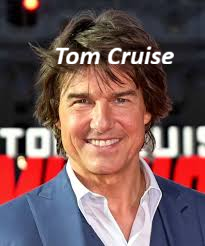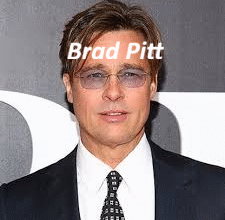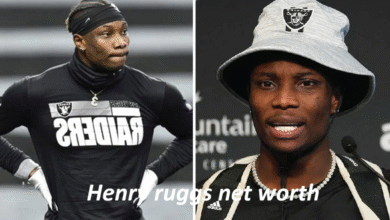Tom Cruise: The Unstoppable Force of Hollywood

When you think of Hollywood’s most enduring stars, few names carry the weight and magnetism of Tom Cruise. For over four decades, this enigmatic actor has captivated audiences worldwide, transforming from a fresh-faced teen heartthrob into one of cinema’s most bankable and committed performers. His journey through Hollywood reads like a masterclass in reinvention, dedication, and sheer willpower.
What sets Cruise apart isn’t just his box office success or his movie star charisma—it’s his unwavering commitment to his craft and his almost supernatural ability to stay relevant in an industry notorious for chewing up and spitting out even its brightest stars. From his breakout role in “Risky Business” to his death-defying stunts in the “Mission: Impossible” franchise, Cruise has consistently pushed boundaries and redefined what it Tom Cruise means to be a leading man in modern cinema.
The man born Thomas Cruise Mapother IV has become synonymous with high-octane entertainment, jaw-dropping action sequences, and an intensity that’s both captivating and slightly unnerving. But there’s so much more to his story than the headlines and the spectacle—there’s a complex performer who has navigated Tom Cruise the treacherous waters of fame with remarkable persistence and an almost obsessive attention to detail.
The Early Years: From Struggling Teen to Rising Star
Tom Cruise’s origin story isn’t the typical Hollywood fairy tale of overnight success. Born in Syracuse, New York, in 1962, his childhood was marked by frequent moves and family instability. His father, Thomas Mapother III, was an electrical engineer who struggled with alcoholism, while his mother, Mary Lee, worked multiple Tom Cruise jobs to keep the family afloat. This early instability would later fuel Cruise’s drive for control and perfection in his professional life.
The future superstar’s path to acting wasn’t straightforward. He initially harbored dreams of becoming a Catholic priest and even spent a year at a Franciscan seminary. However, his passion for performance emerged during high school, where he discovered theater and began to realize his natural talent for commanding an Tom Cruise audience’s attention. This revelation would prove to be the turning point that set him on the path to Hollywood.
Moving to New York City in the early 1980s with just a few hundred dollars and boundless ambition, Cruise embodied the classic struggling actor narrative. He waited tables, worked as a busboy, and auditioned relentlessly while sleeping on friends’ couches. His breakthrough came with small roles in “Endless Love” (1981) and “Taps” (1981), where his intensity and natural screen presence began to catch the attention of Tom Cruise casting directors and audiences alike. These early performances hinted at the magnetic quality that would soon make him one of the most recognizable faces on the planet.
Breakthrough Moments: Risky Business and Top Gun
The year 1983 marked Tom Cruise’s transformation from promising newcomer to bona fide movie star with “Risky Business.” His portrayal of Joel Goodsen, the enterprising teenager who turns his parents’ house into a temporary brothel, became an instant cultural phenomenon. The image of Cruise sliding across the floor in his underwear while lip-syncing to Bob Seger’s “Old Time Rock and Roll” became one of Tom Cruise most iconic moments, cementing his status as the epitome of 1980s cool.
But it was “Top Gun” in 1986 that truly launched Cruise into the stratosphere of superstardom. Playing the cocky Navy pilot Pete “Maverick” Mitchell, Cruise embodied the perfect blend of vulnerability and bravado that would become his signature. The film’s massive success wasn’t just about the spectacular aerial sequences or the memorable soundtrack—it was about Cruise’s ability to make audiences believe in his character’s journey from reckless hotshot to mature leader. His chemistry with Kelly McGillis and the bromance with Anthony Edwards created emotional depth that elevated what could have been a simple action film into something more meaningful.
The success of “Top Gun” established Cruise as more than just another pretty face—he was a legitimate movie star who could open films based on his name alone. The film’s impact on popular culture was immense, from the resurgence of naval recruitment to the popularization of aviator sunglasses and leather Tom Cruise jackets. More importantly for Cruise’s career, it proved he could handle big-budget action while maintaining the emotional authenticity that made audiences care about his characters.
Mission: Impossible – Redefining Action Cinema
:max_bytes(150000):strip_icc()/Jerry-Bruckheimer-and-Tom-Cruise-2022-2bd9bf69b51244af91b90e0810d46f5d.jpg)
While Tom Cruise had already established himself as a major star by the 1990s, it was the “Mission: Impossible” franchise that truly showcased his evolution as both an actor and a producer. Taking on the role of Ethan Hunt in 1996, Cruise didn’t just star in the film—he became the driving force behind an entire franchise that would span decades and redefine action cinema for generations.
What makes the “Mission: Impossible” series so remarkable isn’t just the increasingly elaborate set pieces or the intricate plotting—it’s Cruise’s commitment to performing his own stunts, no matter how dangerous or seemingly impossible they might be. From hanging off the side of a plane during takeoff in “Rogue Nation” to scaling the world’s tallest building in “Ghost Protocol,” Cruise has consistently pushed the boundaries of what audiences expect from action sequences. His dedication goes beyond mere spectacle; it creates an authenticity that CGI simply cannot replicate.
The franchise has also demonstrated Cruise’s growth as a creative force in Hollywood. As both star and producer, he has maintained creative control while surrounding himself with talented directors like Brian De Palma, John Woo, and Christopher McQuarrie. Each film in the series feels distinctly different while maintaining the Tom Cruise core elements that make “Mission: Impossible” special: intricate heists, impossible stunts, and Cruise’s unwavering commitment to entertaining audiences. The success of the franchise, with each subsequent film often outperforming its predecessor at the box office, proves that Cruise’s instincts for crowd-pleasing entertainment remain as sharp as ever.
The Art of Stunt Work: Cruise’s Commitment to Authenticity
Tom Cruise’s approach to stunt work has become legendary in Hollywood, setting a standard that few actors are willing or able to match. His philosophy is simple: if the audience can see it’s really him performing these death-defying feats, the emotional investment increases exponentially. This commitment has led to Tom Cruise some of the most breathtaking action sequences in modern cinema, but it’s also resulted in numerous injuries and close calls that would make most insurance companies break out in cold sweats.
The preparation for these stunts is exhaustive and methodical. Cruise doesn’t just show up on set and wing it—he trains for months, sometimes years, to ensure he can safely execute each sequence. For “Mission: Impossible – Fallout,” he spent over a year learning to fly helicopters, ultimately performing aerial maneuvers that seasoned stunt pilots found impressive. His motorcycle chase through the streets of Paris wasn’t just about speed and spectacle; it was about creating a visceral experience that would make audiences feel like they were right there with Ethan Hunt.
This dedication to authenticity extends beyond the physical demands of stunt work. Cruise studies every aspect of his character’s world, from the technical details of spy gadgets to the psychological profile of an intelligence operative. His collaboration with real CIA consultants and former military personnel adds layers of credibility that elevate his performances above typical action movie fare. The result is action sequences that feel grounded in reality, even when they’re operating on the outer limits of what’s physically possible.
Personal Life and Public Perception
Tom Cruise’s personal life has been the subject of intense media scrutiny throughout his career, often overshadowing his professional achievements. His high-profile relationships and marriages to Mimi Rogers, Nicole Kidman, and Katie Holmes have provided tabloid fodder for decades, while his association with Scientology has sparked both curiosity and controversy. These aspects of his life have sometimes created a complex relationship between Cruise the public figure and Cruise the performer.
The media’s fascination with Cruise reached a fever pitch in the mid-2000s, particularly following his enthusiastic couch-jumping appearance on “The Oprah Winfrey Show” and his public criticism of psychiatry and antidepressants. These incidents led to a period where public perception of Cruise became increasingly polarized, with some viewing him as eccentric or even unstable. However, his ability to separate his personal beliefs from his professional work has allowed him to maintain his status as a bankable movie star.
What’s remarkable about Cruise’s handling of public scrutiny is his unwavering focus on his craft. Despite the media circus that often surrounds him, he has continued to deliver compelling performances and box office hits. His professionalism on set is legendary—cast and crew members consistently praise his work ethic, his respect for everyone involved in the production, and his genuine enthusiasm for filmmaking. This dedication to his craft has helped him weather personal controversies and maintain his position as one of Hollywood’s most reliable leading men.
Legacy and Continued Relevance
At an age when many action stars are considering retirement, Tom Cruise continues to push himself and his audiences to new heights. His recent films demonstrate that he hasn’t lost a step—if anything, he seems more committed than ever to delivering the kind of entertainment that makes moviegoing a special experience. The success of “Top Gun: Maverick” proved that Cruise could successfully revisit his most iconic role while creating something fresh and emotionally resonant for both longtime fans and new audiences.
Cruise’s influence on Hollywood extends far beyond his own performances. His commitment to practical effects and real locations has inspired a generation of filmmakers to prioritize authenticity over digital convenience. Directors consistently praise his collaborative approach and his willingness to serve the story rather than simply showcasing his star power. This attitude has helped create some of the most memorable action sequences in cinema history while maintaining the emotional core that makes audiences care about the characters.
Looking forward, Tom Cruise shows no signs of slowing down. With more “Mission: Impossible” films in development and rumors of projects that will take him to even more extreme locations—including potentially filming in space—he continues to find new ways to surprise and delight audiences. His legacy isn’t just about the individual performances or the spectacular stunts; it’s about his unwavering commitment to the magic of cinema and his belief that movies should be experiences that transport audiences to worlds they never imagined possible. In an era of franchise filmmaking and digital effects, Tom Cruise remains a reminder that sometimes the most powerful special effect is simply an actor willing to give everything for the sake of entertaining an audience.



